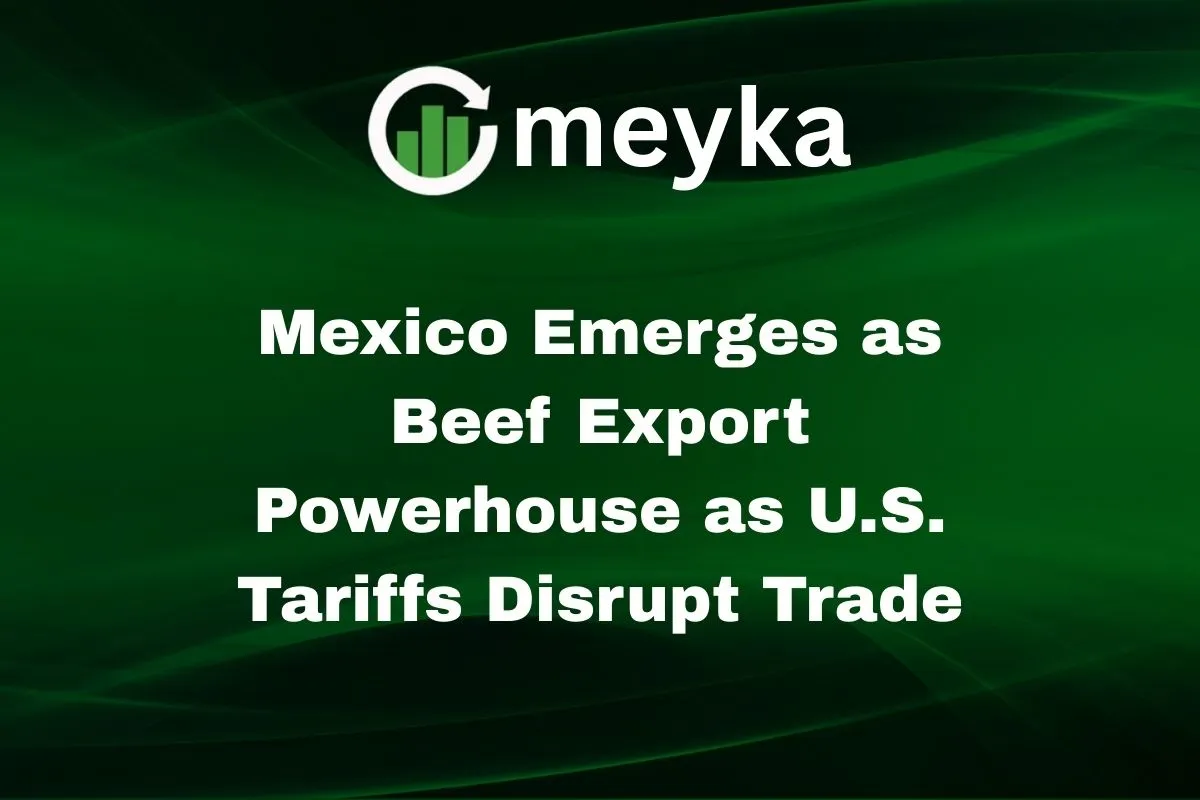Mexico Emerges as Beef Export Powerhouse as U.S. Tariffs Disrupt Trade
The international beef market is experiencing major changes. In recent years, the United States has been a dominant force in beef exports. However, recent U.S. tariff policies and trade tensions have disrupted established supply chains, prompting countries like Mexico to capitalize on new opportunities. As a result, Mexico’s beef export sector has seen remarkable growth, positioning the country as a key supplier in the global market.
Background: U.S. Tariffs and Global Beef Trade
In August 2025, the U.S. imposed a 50% tariff on Brazilian beef, one of its largest suppliers. This decision was part of President Trump’s new trade package aimed at reshaping agricultural flows. The immediate effect? Brazilian beef became too expensive to compete in the U.S. market. Exporters had to reroute shipments, with Mexico becoming Brazil’s second-largest destination after China. At the same time, U.S. buyers began sourcing more from nearby Mexico, where trade is supported by the USMCA agreement and lower logistics costs.
Mexico’s Rising Beef Export Market
Mexico has seized the opportunity presented by the changing global trade dynamics. In 2025, Mexico’s beef production is projected to exceed 2.3 million metric tons, with exports reaching 310,000 tons, a 7% increase from the previous year. This growth is attributed to substantial investments in feedlots and processing plants, such as SuKarne’s $500 million complex in Tlahualilo. Additionally, Mexico’s proximity to the U.S. and favorable trade agreements have further strengthened its position in the beef export market.
The country’s strategic investments in infrastructure, cold chain logistics, and certifications have enhanced its competitiveness. Partnerships with international distributors and retailers have expanded Mexico’s reach, while marketing strategies highlight the quality and sustainability of Mexican beef. Government support and export promotion initiatives have also played a crucial role in this growth.
Economic and Trade Implications
Mexico’s rise as a beef export powerhouse has significant economic and trade implications. The country’s advantage lies in its proximity to the U.S., which allows for reduced shipping times and costs. Additionally, favorable trade agreements, such as the United States-Mexico-Canada Agreement (USMCA), have facilitated smoother trade flows.
The increased demand for Mexican beef has bolstered the domestic cattle farming and processing industries. However, challenges remain, including maintaining quality standards, disease control, and logistical constraints. Addressing these challenges is essential for sustaining growth and competitiveness in the global market.
Market Response and Consumer Trends
International buyers are showing strong interest in Mexico’s growing beef exports. Demand trends in Asia and Europe favoring Mexican beef indicate a shift in sourcing preferences. Consumers perceive Mexican beef as a high-quality, sustainable option, which has enhanced its appeal in international markets.
The increased availability of Mexican beef has provided consumers with more choices, potentially leading to more competitive pricing and improved product offerings. This shift also reflects broader trends in global trade, where diversification of supply sources is becoming increasingly important.
Strategic Moves by Mexican Exporters
Mexican exporters have undertaken several strategic initiatives to strengthen their position in the global beef market. Investments in infrastructure, such as state-of-the-art processing facilities and cold chain logistics, have improved efficiency and product quality. Certifications and adherence to international standards have enhanced the credibility of Mexican beef in foreign markets.
Partnerships with international distributors and retailers have expanded Mexico’s market reach. Marketing strategies emphasize the quality, sustainability, and traceability of Mexican beef, appealing to increasingly conscientious consumers. Government support and export promotion initiatives have further bolstered these efforts.
Future Outlook and Challenges
Looking ahead, Mexico is poised to continue its ascent in the global beef export market. The country’s strategic investments and favorable trade relations position it to become a top global beef exporter. However, risks such as trade retaliation, environmental regulations, and livestock disease outbreaks pose challenges that need to be managed proactively.
Opportunities exist in niche markets, organic beef, and premium segments, where consumer demand for high-quality, sustainably produced products is growing. By capitalizing on these opportunities and addressing potential challenges, Mexico can solidify its position in the evolving global beef trade landscape.
Conclusion
Mexico’s emergence as a beef export powerhouse is a testament to its strategic response to changing global trade dynamics. By capitalizing on opportunities created by U.S. tariffs and implementing strategic initiatives, Mexico has positioned itself as a key player in the global beef market. As the global beef trade continues to evolve, Mexico’s role is likely to expand, reshaping international supply chains and consumer choices.
Disclaimer:
This content is for informational purposes only and is not financial advice. Always conduct your research.






